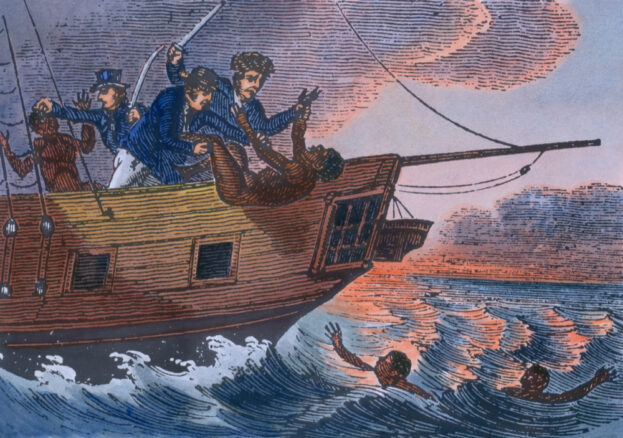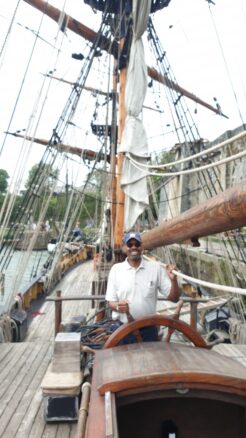

The Movement for Justice and Reconciliation was established in 2015 to highlight and address the legacy of the colonial enslavement of Africans in the Caribbean and the resulting industrial exploitation which ensued from that. To do this, we have gathered a varied team of researchers, historians, theologians, archivists, and community organisers to get our message out to the public.
The current Coronavirus pandemic and the graphic racial injustices witnessed in America have exposed a deep, divisive malaise in the fabric of Western societies, whose foundational institutions have their roots in the 15th century. It was then that various Popes of Western Europe sanctioned the enslavement of Africans. In 1442 Pope Eugenius IV issued a papal decree or bull – Illius Qui, which approved of Prince Henry’s slave trading expeditions to Africa and then gave Portugal sole rights over all its discoveries. His successor Pope Nicholas V issued another bull, Romanus Pontifex in January 1454 which gave formal support to Portugal’s monopoly of trading in Africa. This included Africans, as well as the instruction to convert them to the Christian faith. This bull was read out in the Cathedral of Lisbon in both Latin and Portuguese. And, as one historian pointed out, it helped to establish the familiar Portuguese pattern of ‘making money’, ‘saving’ Africans from ‘barbarism’, and the excitement of voyages down the Guinea coast and raiding expeditions up the rivers. (Thomas, Hugh. The Slave Trade: The story of the Atlantic Slave Trade:1440-1870. Touchstone books, 1997. Page 65).
This created a platform for White supremacy and the subsequent colonisation of the African and American continents by European nations. During colonisation, these European powers led by the Portuguese and the Spanish, created a system that categorised people. It was a hierarchy based upon the proportion of European blood they possessed and the hue of their complexion; a “pigmentocracy”, where lighter-skinned people enjoyed higher social status. After centuries of implementation, this white hegemony is embedded in the psyche, philosophy, and institutional structures of many societies in Western Europe, Asia, Australia, and the Americas. Consequently, innumerable metrics demonstrate that Black and brown people in these societies are often marginalised, denigrated, dominated, and treated detrimentally.
A major part of the mission and mandate of the Movement for Justice and Reconciliation is to increase the consciousness of those still steeped in white hegemonic views by highlighting their origins. Our aim is to create a climate that fosters reconciliation by revealing the histories behind many of the divisions that are still evident in societies as a direct result of slavery and colonisation and provide tangible mechanisms to heal them.
A picture containing outdoor, person, person, fence
Description automatically generated As part of our ongoing efforts to achieve these aims, we have carried out research and delivered programmes since our inception. One of our projects is The Zong replica slave ship project.
We particularly want to draw this to the attention of the Black community, since an abhorrent incident aboard The Zong slave ship played a pivotal role in raising the awareness of the public to the fact that Black people were, in fact, human beings and not chattel.
During an Atlantic crossing in 1781, 132 people captured in Africa were thrown overboard from The Zong, drowning them, and claiming insurance money for them as loss of goods. The crew responsible for this misdeed were tried in 1783, although the case was heard as an insurance dispute, rather than a murder trial. Still, this seminal case changed public opinion about the transatlantic slave trade and highlighted the horrific experiences of African people at the hands of their captors.
The Zong case galvanised the abolitionists, whose efforts eventually brought about the Slave Trade Act of 1807, which abolished the transportation of slaves from Africa on British ships. The abolition of slavery itself would take another 31 years, as many parliamentarians, businessmen and clergymen had huge investment in the Caribbean Plantations and owned significant amounts of African Slaves.
The Movement for Justice and Reconciliation has the opportunity to purchase a ship which will be renamed The Zong. We intend to use this as a floating museum to educate people to the fact that racism is a legacy of the transatlantic slave trade and that white privilege and hegemony must cease.
The horrific events aboard the original Zong were used in the fight to abolish the slave trade and eventually slavery itself. Our intention is to use the replica slave ship to educate people that Black Lives Matter. The legal, political, and religious institutions of the past – whose mandates resulted in colourism, classism and racism which still exist today – must reconcile their role in the systemic inequity and work towards eliminating it.
A large majority of the descendants of the enslaved still suffer from Post-Traumatic Slave Syndrome, which is expressed in myriad ways. (see http://www.mjr-uk.com/resources.html for articles relating to the Post-traumatic Slave Syndrome).
To address these maladies, we need to repair the damages of centuries of injustice. Only when this happens, can we repeat the line form the old negro spiritual, “free at last, free at last, thank God Almighty, I’m free at last.”
The MJR would welcome donations by visiting their website www.mjr-uk.com and press the donate button.
